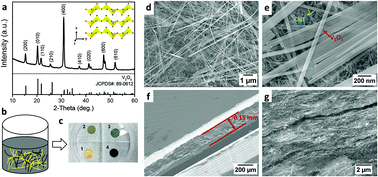High capacity vanadium oxide electrodes: effective recycling through thermal treatment†
Abstract
This study demonstrates that thermal regeneration is an effective approach to convert degraded phases to functioning electroactive materials, restore functional delivered capacity and recover material crystallinity while retaining the integrity of the parent electrode. V2O5 nanowires were synthesized through a facile hydrothermal method and used to fabricate V2O5/carbon nanotube (CNT) binder free electrodes. Discharge of the V2O5–CNT electrodes coupled with operando energy dispersive X-ray diffraction shows no evidence of phase segregation throughout the 150 μm thick binder free electrodes indicating full utilization of a thick electrode. When V2O5 is highly electrochemically lithiated (x > 2 in LixV2O5), irreversible phase transformation to ω-LixV2O5 was observed, accompanied by a capacity decrease of ∼40% over 100 cycles. A simple thermal treatment of the entire electrode results in a delivered capacity equal to or higher than the original value. Both phase conversion and an increase in material crystallinity as a result of thermal treatment are observed where structural analysis indicates the formation of Li1V3O8. The electrode design approach with thick electrodes and functional thermal regeneration may provide a broader choice of electroactive materials through decreasing the environmental burden by extending the lifetime of energy storage systems.

- This article is part of the themed collection: 2019 Sustainable Energy and Fuels HOT Articles


 Please wait while we load your content...
Please wait while we load your content...